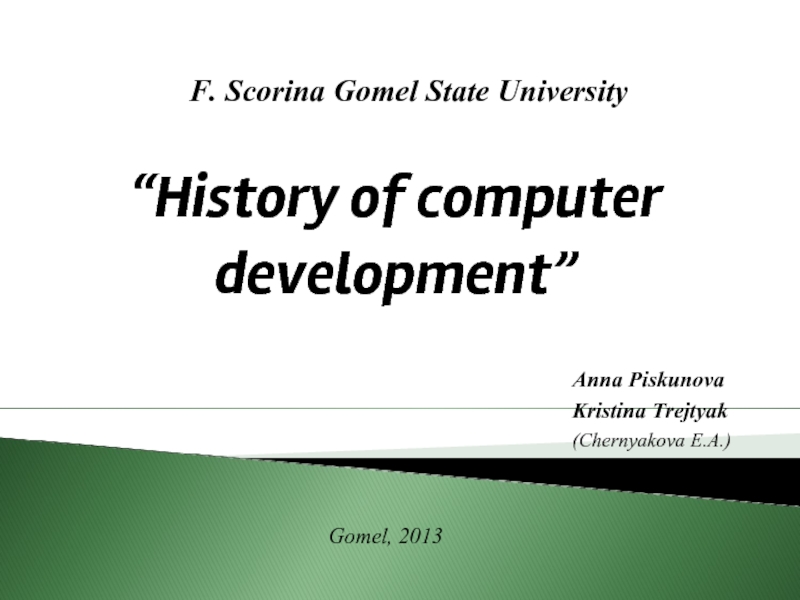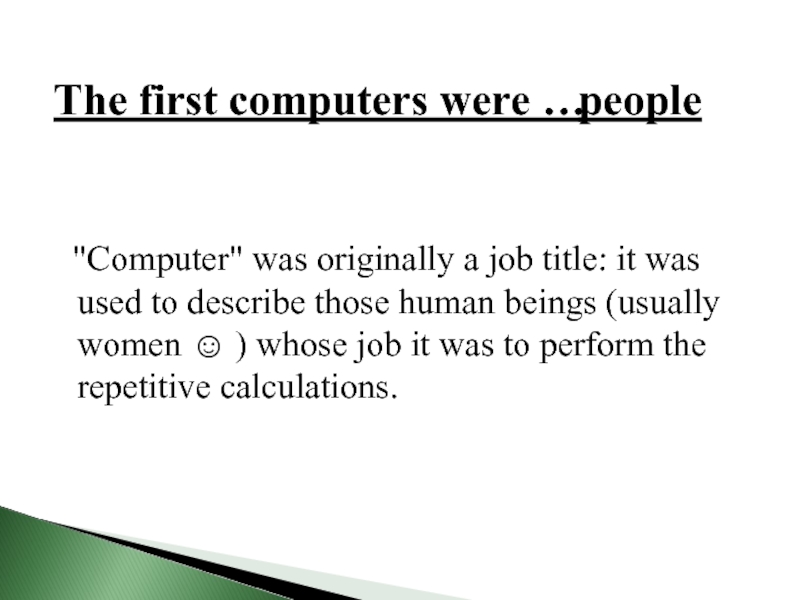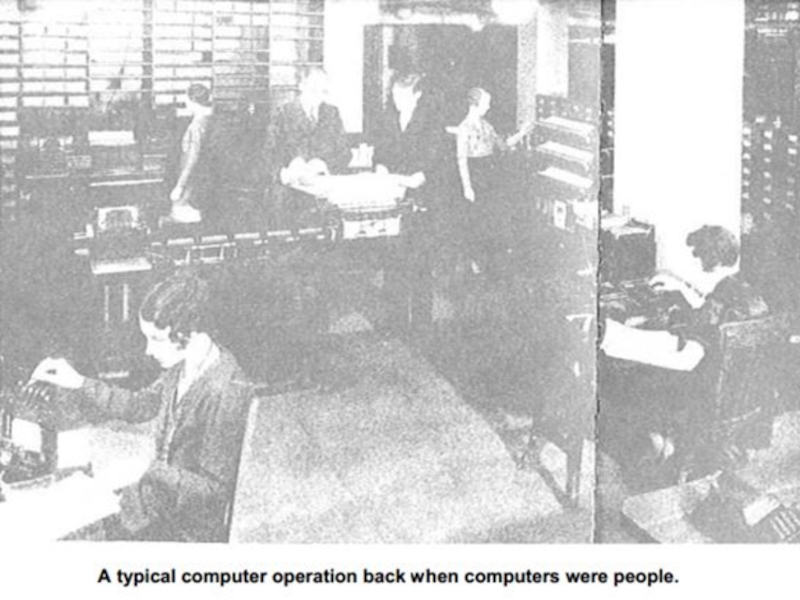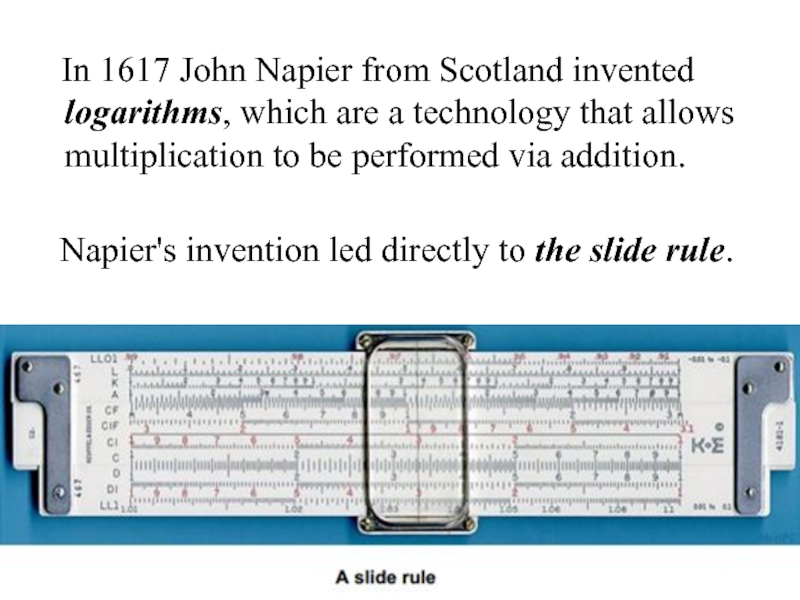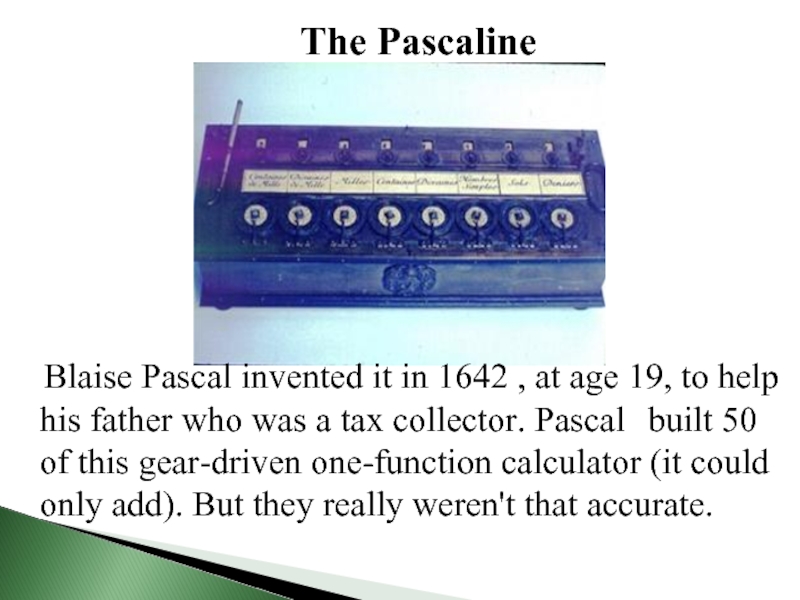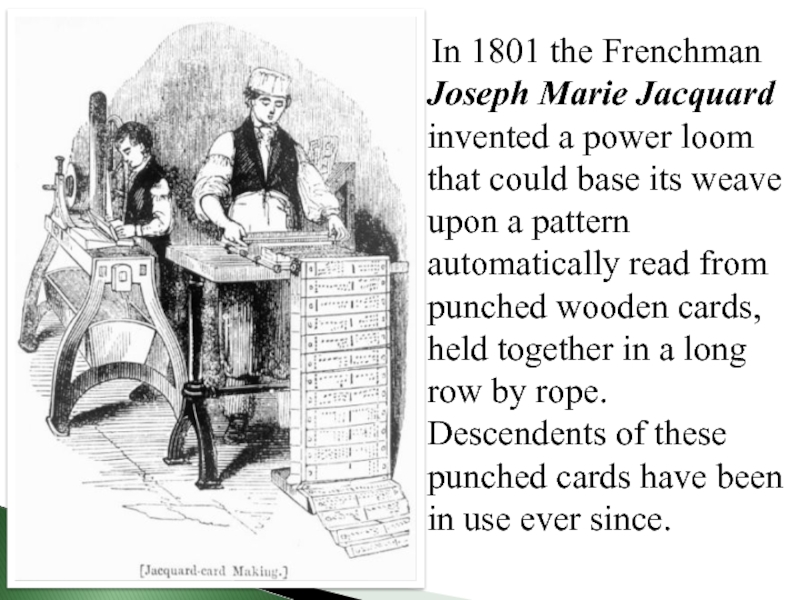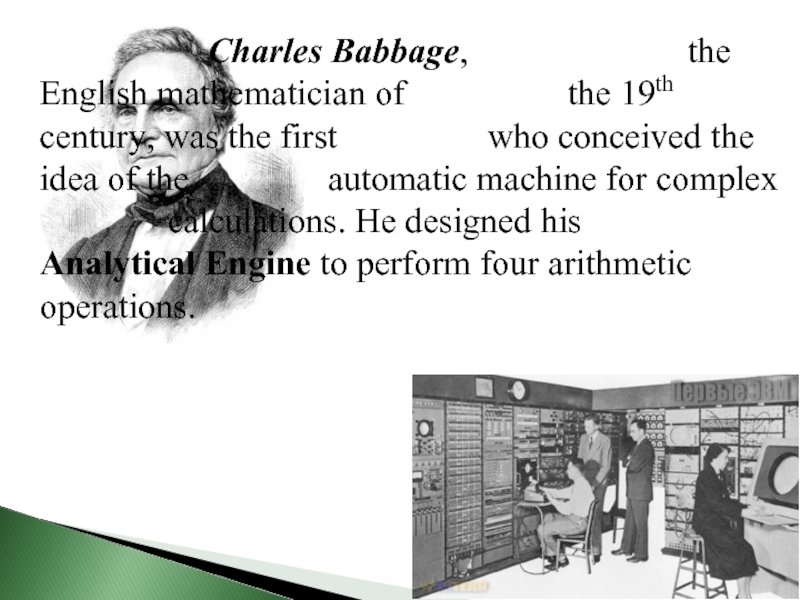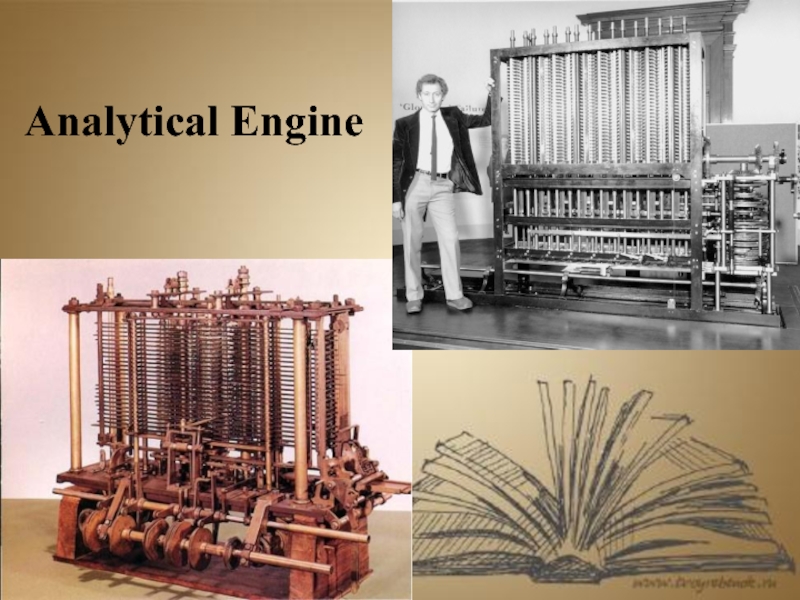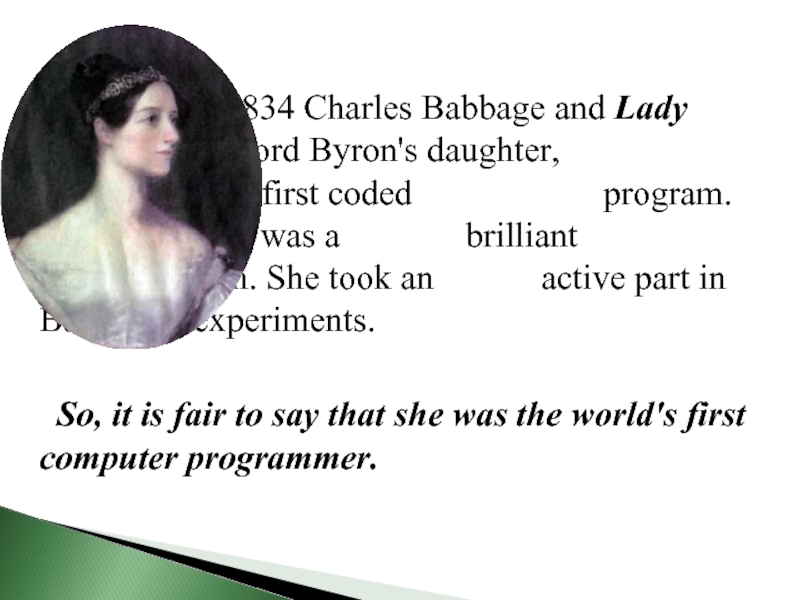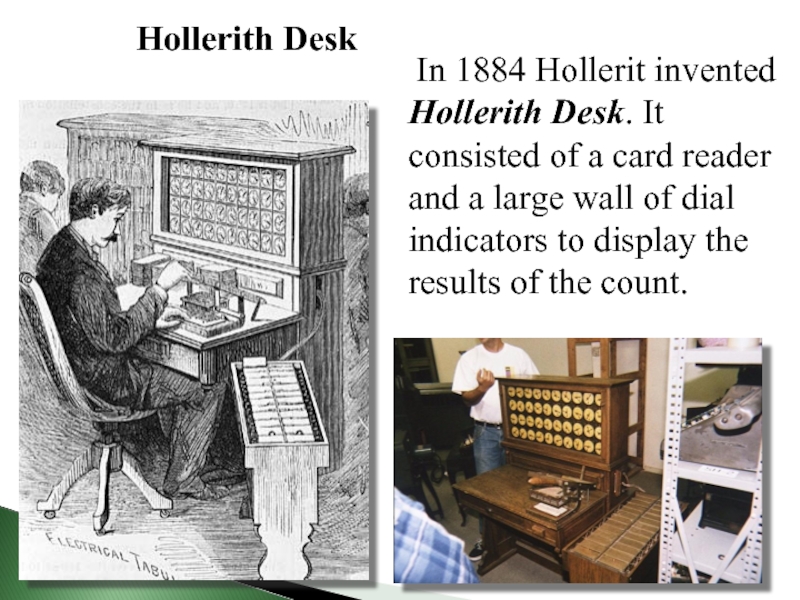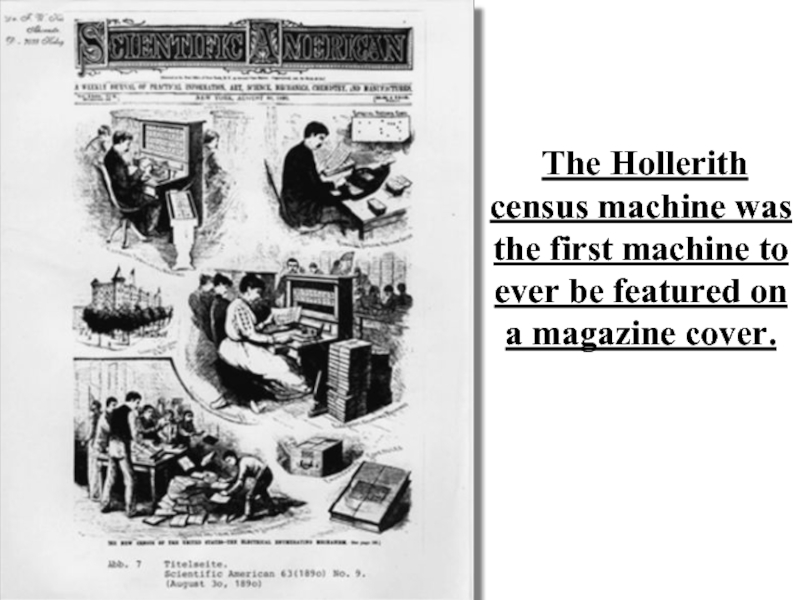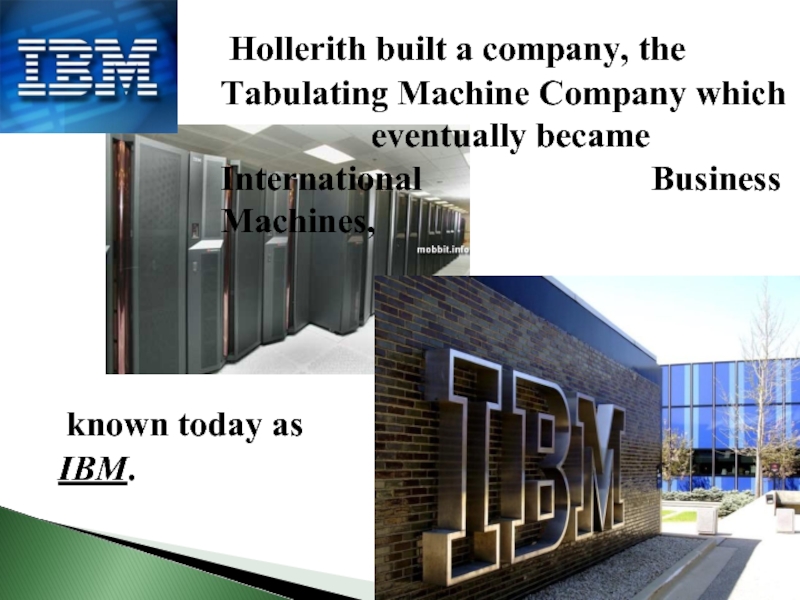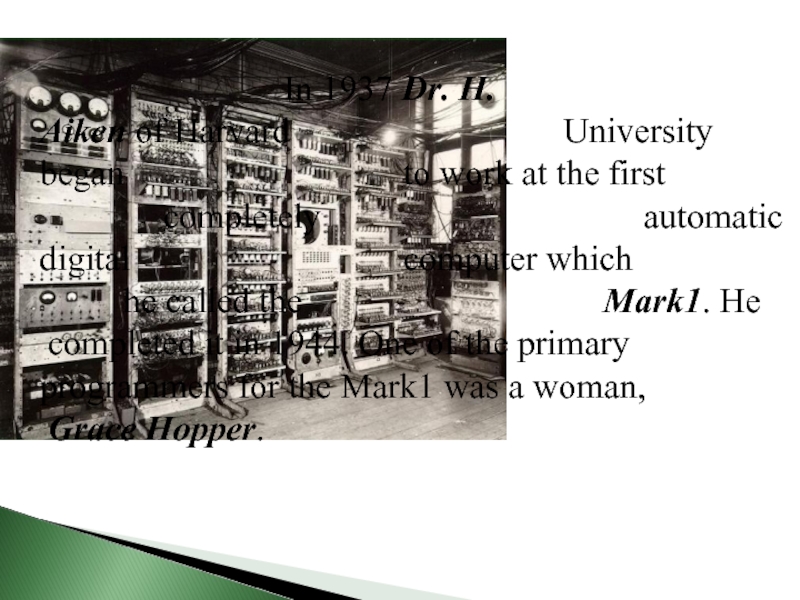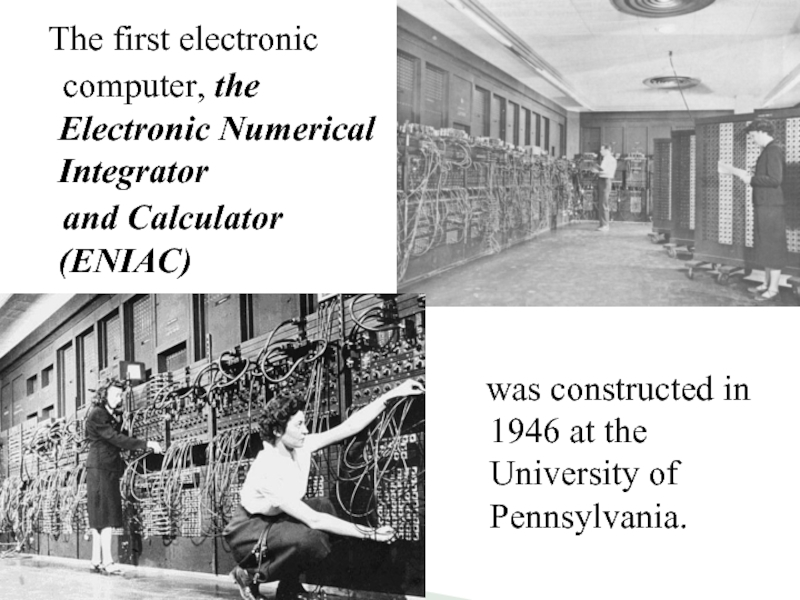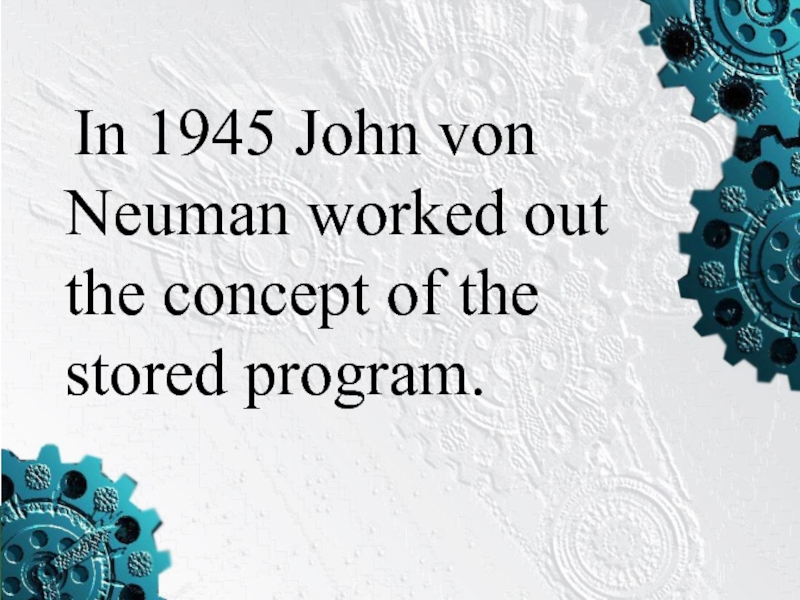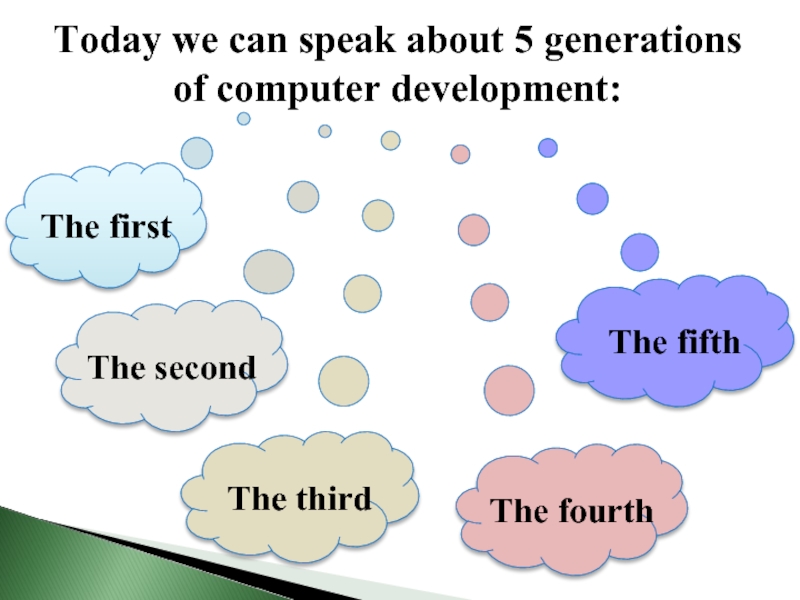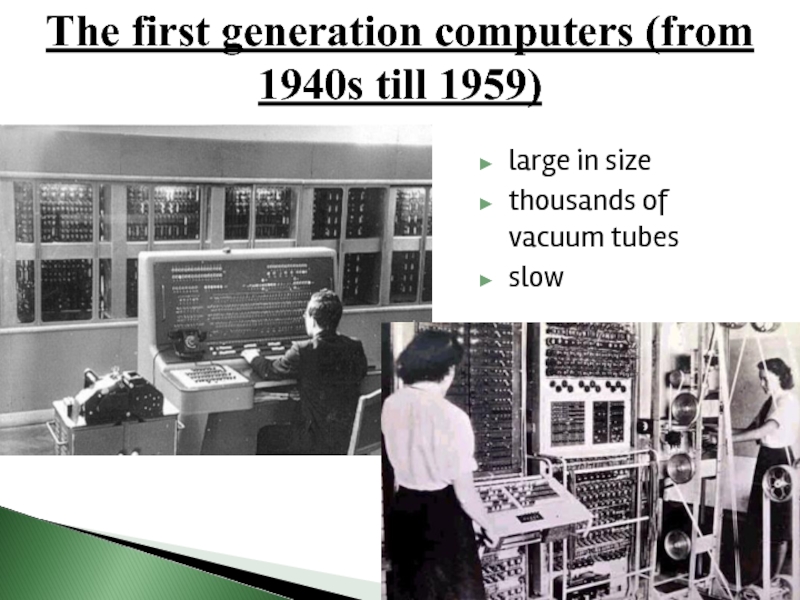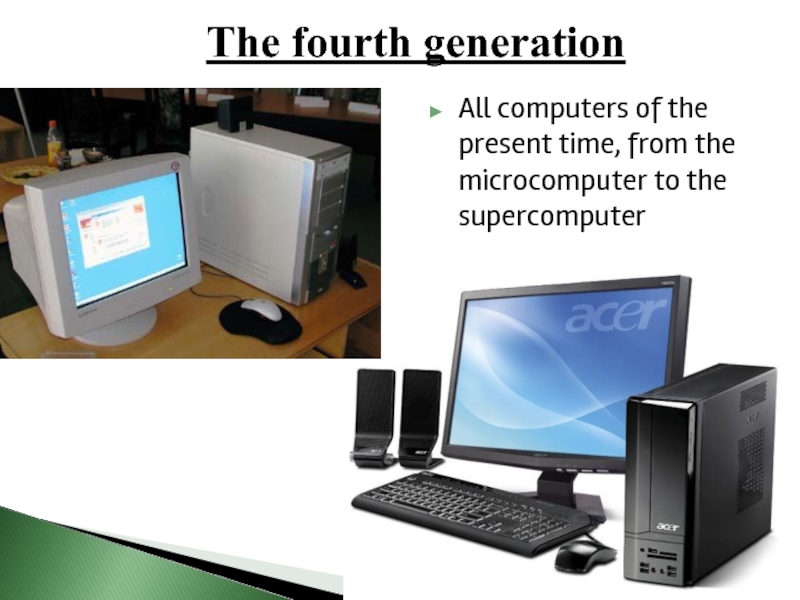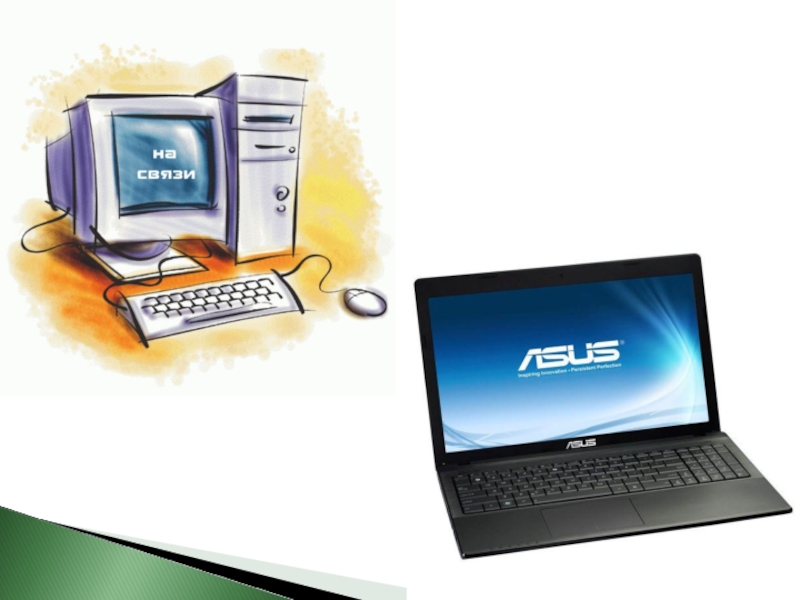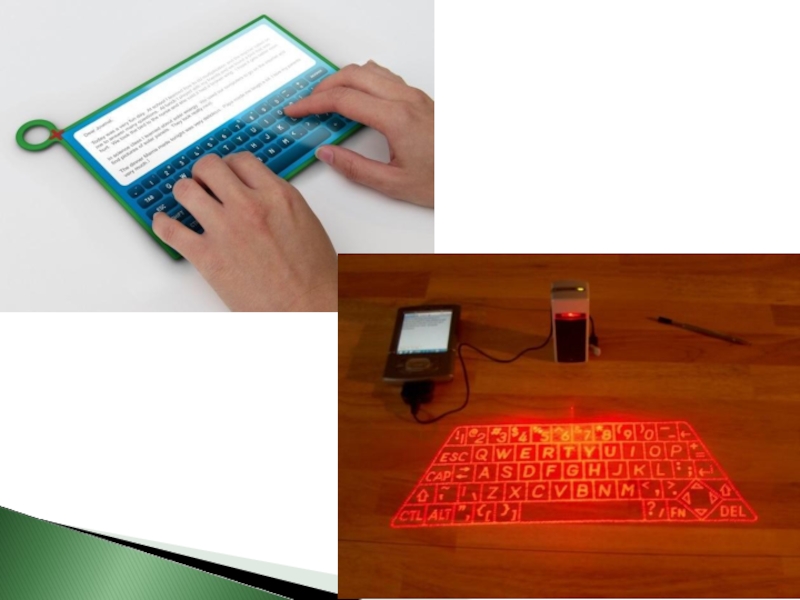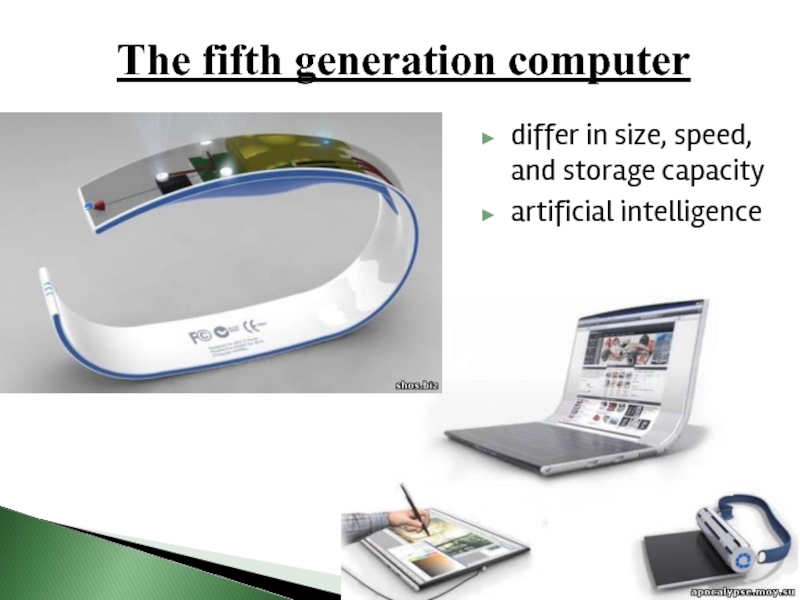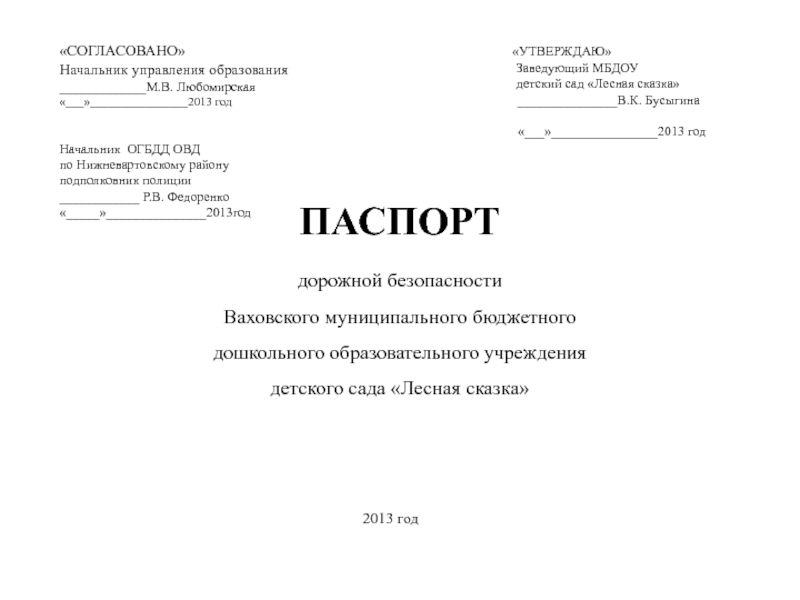Gomel, 2013
- Главная
- Разное
- Дизайн
- Бизнес и предпринимательство
- Аналитика
- Образование
- Развлечения
- Красота и здоровье
- Финансы
- Государство
- Путешествия
- Спорт
- Недвижимость
- Армия
- Графика
- Культурология
- Еда и кулинария
- Лингвистика
- Английский язык
- Астрономия
- Алгебра
- Биология
- География
- Детские презентации
- Информатика
- История
- Литература
- Маркетинг
- Математика
- Медицина
- Менеджмент
- Музыка
- МХК
- Немецкий язык
- ОБЖ
- Обществознание
- Окружающий мир
- Педагогика
- Русский язык
- Технология
- Физика
- Философия
- Химия
- Шаблоны, картинки для презентаций
- Экология
- Экономика
- Юриспруденция
History of computer development презентация
Содержание
- 1. History of computer development
- 4. In 1617 John Napier from
- 5. The Pascaline
- 6. A few years after Pascal,
- 7. In 1801 the Frenchman Joseph
- 9. Charles Babbage, the English mathematician of
- 10. Analytical Engine
- 11. In 1834 Charles
- 12. In 1884 Hollerit invented Hollerith Desk.
- 13. The Hollerith census machine was the first
- 14. Hollerith built a company, the Tabulating Machine
- 15. In 1937 Dr.
- 16. The first electronic
- 17. In 1945 John von Neuman worked out the concept of the stored program.
- 18. Today we can speak about 5 generations
- 19. The first generation computers (from 1940s till
- 20. The second generation (began in 1959) use
- 21. The third generation silicon chips small size large capabilities
- 22. The fourth generation All computers of the present time, from the microcomputer to the supercomputer
- 25. The fifth generation computer differ in size, speed, and storage capacity artificial intelligence
- 26. natural languages large-scale integration technologies
- 27. To be continued…
Слайд 1F. Scorina Gomel State University
“History of computer
development”
Anna Piskunova
Kristina Trejtyak
(Chernyakova
Слайд 2
"Computer" was originally a job title: it was
people
The first computers were …
Слайд 4 In 1617 John Napier from Scotland invented logarithms, which
Napier's invention led directly to the slide rule.
Слайд 5 The Pascaline
Blaise Pascal invented it in
Слайд 6 A few years after Pascal, the German Gottfried Wilhelm
Слайд 7 In 1801 the Frenchman Joseph Marie Jacquard invented a
Слайд 9 Charles Babbage, the English mathematician of the 19th century, was
Слайд 11
In 1834 Charles Babbage and Lady Lovelace,
So, it is fair to say that she was the world's first computer programmer.
Слайд 12 In 1884 Hollerit invented Hollerith Desk. It consisted of a
Hollerith Desk
Слайд 13 The Hollerith census machine was the first machine to ever be
Слайд 14 Hollerith built a company, the Tabulating Machine Company which
known today as IBM.
Слайд 15 In 1937 Dr. H. Aiken
Слайд 16 The first electronic
computer, the Electronic Numerical Integrator
and Calculator (ENIAC)
was constructed in 1946 at the University of Pennsylvania.
Слайд 18Today we can speak about 5 generations of computer development:
The first
The
The third
The fourth
The fifth
Слайд 19The first generation computers (from 1940s till 1959)
large in size
thousands
slow
Слайд 20The second generation (began in 1959)
use of transistors
smaller, more powerful,
programming languages
